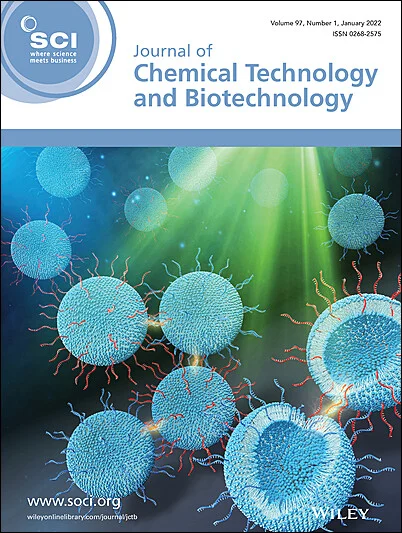下载PDF
{"title":"Microbiologically influenced corrosion in aluminium alloys and premier techniques for comprehensive identification and characterization across diverse metal types","authors":"Brinda, M S Divyashree, Suma A Rao, Padmalatha Rao, Lavanya Mulky","doi":"10.1002/jctb.7848","DOIUrl":null,"url":null,"abstract":"<p>Microbiologically influenced corrosion (MIC) is acknowledged as a significant type of corrosion due to its extensive impact on metal/alloy surfaces. As MIC accounts for 20% of all corrosion instances, it is a critical factor causing service failure of engineering materials such as steel and aluminium alloy. Despite widespread use of aluminium's inherent properties, several aluminium alloys are prone to MIC due to microbial biofilm formation and metabolic activities at the biofilm/metal interface. This review comprehensively explores MIC over multiple series of aluminium alloys, highlighting their properties and vulnerabilities to MIC. It delves into the correlation between the aluminium alloy and microorganisms, offering an in-depth analysis of MIC mechanisms. It also explores the relationship between the composition of aluminium alloys and bacterial activity, highlighting their primary metabolic reactions that contribute to the corrosion of aluminium alloys. Additionally, the review depicts the impact of various environmental factors contributing to the deterioration of these alloys, and an extensive overview of MIC identification and characterization techniques on multiple metal/alloy types associated with the specific challenges and limitations, and outlines potential future directions regarding MIC. This review aspires to provide effective strategies for the detection and mitigation of corrosion-related obstacles. In conclusion, MIC poses significant risks to aluminium alloys in critical sectors. Effective detection and mitigation strategies are essential in improving material longevity and performance. Addressing MIC challenges proactively can help to ensure the reliability and durability of aluminium alloys in demanding environments. © 2025 The Author(s). <i>Journal of Chemical Technology and Biotechnology</i> published by John Wiley & Sons Ltd on behalf of Society of Chemical Industry (SCI).</p>","PeriodicalId":15335,"journal":{"name":"Journal of chemical technology and biotechnology","volume":"100 6","pages":"1143-1158"},"PeriodicalIF":2.8000,"publicationDate":"2025-03-17","publicationTypes":"Journal Article","fieldsOfStudy":null,"isOpenAccess":false,"openAccessPdf":"https://onlinelibrary.wiley.com/doi/epdf/10.1002/jctb.7848","citationCount":"0","resultStr":null,"platform":"Semanticscholar","paperid":null,"PeriodicalName":"Journal of chemical technology and biotechnology","FirstCategoryId":"5","ListUrlMain":"https://onlinelibrary.wiley.com/doi/10.1002/jctb.7848","RegionNum":4,"RegionCategory":"生物学","ArticlePicture":[],"TitleCN":null,"AbstractTextCN":null,"PMCID":null,"EPubDate":"","PubModel":"","JCR":"Q3","JCRName":"BIOTECHNOLOGY & APPLIED MICROBIOLOGY","Score":null,"Total":0}
引用次数: 0
引用
批量引用
Abstract
Microbiologically influenced corrosion (MIC) is acknowledged as a significant type of corrosion due to its extensive impact on metal/alloy surfaces. As MIC accounts for 20% of all corrosion instances, it is a critical factor causing service failure of engineering materials such as steel and aluminium alloy. Despite widespread use of aluminium's inherent properties, several aluminium alloys are prone to MIC due to microbial biofilm formation and metabolic activities at the biofilm/metal interface. This review comprehensively explores MIC over multiple series of aluminium alloys, highlighting their properties and vulnerabilities to MIC. It delves into the correlation between the aluminium alloy and microorganisms, offering an in-depth analysis of MIC mechanisms. It also explores the relationship between the composition of aluminium alloys and bacterial activity, highlighting their primary metabolic reactions that contribute to the corrosion of aluminium alloys. Additionally, the review depicts the impact of various environmental factors contributing to the deterioration of these alloys, and an extensive overview of MIC identification and characterization techniques on multiple metal/alloy types associated with the specific challenges and limitations, and outlines potential future directions regarding MIC. This review aspires to provide effective strategies for the detection and mitigation of corrosion-related obstacles. In conclusion, MIC poses significant risks to aluminium alloys in critical sectors. Effective detection and mitigation strategies are essential in improving material longevity and performance. Addressing MIC challenges proactively can help to ensure the reliability and durability of aluminium alloys in demanding environments. © 2025 The Author(s). Journal of Chemical Technology and Biotechnology published by John Wiley & Sons Ltd on behalf of Society of Chemical Industry (SCI).
微生物对铝合金腐蚀的影响,以及在不同金属类型中进行综合鉴定和表征的首要技术
微生物影响腐蚀(MIC)被认为是一种重要的腐蚀类型,因为它对金属/合金表面有广泛的影响。由于MIC占所有腐蚀事件的20%,它是导致钢和铝合金等工程材料使用失效的关键因素。尽管铝的固有特性被广泛使用,但由于微生物生物膜的形成和生物膜/金属界面的代谢活动,一些铝合金容易发生MIC。本文全面探讨了多系列铝合金的MIC,重点介绍了它们的性能和MIC的脆弱性。它深入研究了铝合金与微生物之间的相关性,提供了对MIC机制的深入分析。它还探讨了铝合金的组成和细菌活性之间的关系,强调了它们的主要代谢反应,有助于铝合金的腐蚀。此外,该综述还描述了导致这些合金劣化的各种环境因素的影响,并广泛概述了多种金属/合金类型的MIC识别和表征技术的具体挑战和局限性,并概述了MIC的潜在未来方向。本综述旨在为检测和减轻与腐蚀有关的障碍提供有效的策略。综上所述,MIC对关键行业的铝合金构成了重大风险。有效的检测和缓解战略对于提高材料寿命和性能至关重要。积极应对MIC挑战有助于确保铝合金在苛刻环境中的可靠性和耐用性。©2025作者。化学技术与生物技术杂志,John Wiley &出版;代表化学工业学会(SCI)的儿子有限公司。
本文章由计算机程序翻译,如有差异,请以英文原文为准。


 求助内容:
求助内容: 应助结果提醒方式:
应助结果提醒方式:


